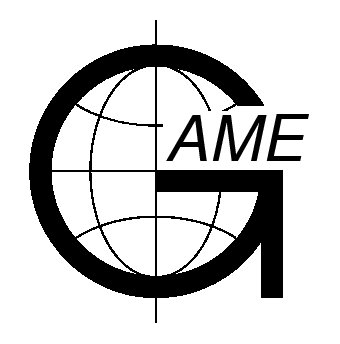Abstracts for the 5th International GAME Conf.

3-5 October 2001
Aichi Trade Center
Nagoya Japan
Data Assimilation of Observations from Microwave Remote Sensing into Land Surface Model
Xin Li (1), Toshio Koike (2), Guodong Cheng (1)
(1) CAREERI
(2) University of Tokyo
We develop a new data assimilation algorithm by employing a heuristic optimization approach named simulated annealing [Kirkpatrick et al., 1983; Press et al., 1993], which is capable to minimize the four dimensional cost function without using the adjoint model. The method has advantages in dealing with the strong nonlinearity and discontinuity, and in finding the global minimal in the hilly structure of the cost function [Bennett and Chua, 1994; Evensen, 1997; Kruger, 1993]. Additionally, all the processes in the model operator and the observation operator can be kept because the method is independent on the cost function. The disadvantage of this method, when compared to the variational method, is its low efficiency. Therefore, we make efforts to improve the method by incorporating very fast simulated annealing (VFSA) and re-annealing algorithms [Ingber, 1989; Szu and Hartley, 1987] into the data assimilation cycle.
Based on the VFSA algorithm, we design a research-operational land surface data assimilation system which can assimilate both the in situ monitoring of soil moisture and soil temperature, and the passive microwave remote sensing observations into a land surface scheme. The modified SiB2 with frozen soil parameterization [Li and Koike, submitted] is used as the model operator, and the radiative transfer model of moist soil [Koike et al, 2000] is used as the observation operator to transfer the brightness temperature into model variables of soil moisture and surface temperature.
We have implemented one dimensional offline test of the algorithm with the GAME-Tibet observations. The algorithm is compared with a control run without assimilating the observations. The results show that the cost value calculated from the optimized initial values is much smaller. In addition, the bias from observations is also significantly reduced. We are going to make the in situ and two dimensional test with SSM/I and TMI observations.
Submittal Information
| Name : | Date : |
| |
| Organization : | Theme : |
Cold and Arid Environmental and Engineering Research Institute, CAS | |
| Address : | Presentation : |
| |
| Country : | Abstract ID : |
| |
| Phone : | Fax : |
| |
| E-mail : | |
| |

